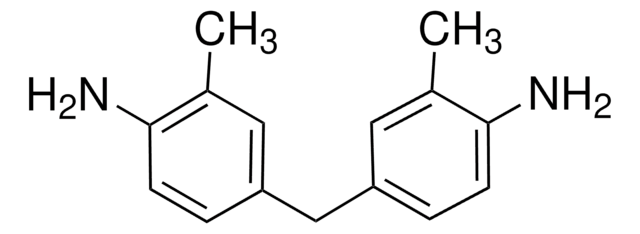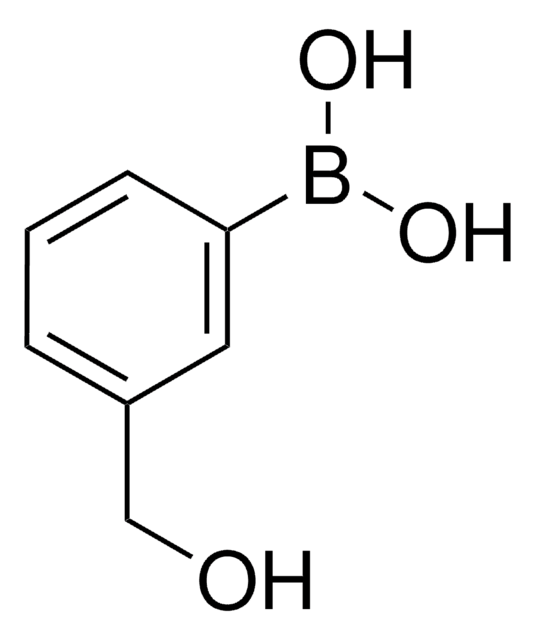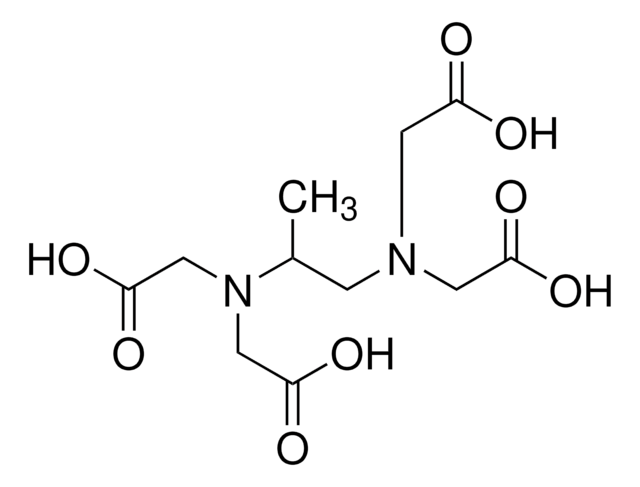54345
N-(2-Hydroxyethyl)iminodiacetic acid
≥98.0% (T)
Synonym(s):
Ethanol diglycine
About This Item
Recommended Products
Assay
≥98.0% (T)
form
solid
mp
178 °C (lit.)
application(s)
peptide synthesis
SMILES string
OCCN(CC(O)=O)CC(O)=O
InChI
1S/C6H11NO5/c8-2-1-7(3-5(9)10)4-6(11)12/h8H,1-4H2,(H,9,10)(H,11,12)
InChI key
JYXGIOKAKDAARW-UHFFFAOYSA-N
Looking for similar products? Visit Product Comparison Guide
General description
Application
- HEIDA can be used as a metal chelating agent for Fe(III) ion. The presence of HEIDA improves the Fenton′s destruction performance of PCE (perchloroethylene) existing as dense non-aqueous phase liquid (DNAPL) in soil slurry systems.
- Oxorhenium(V) complexes with HEIDA are used for the carboxylation of ethane by CO, with potassium peroxodisulfate (K2S2O8)/trifluoroacetic acid (TFA), to afford propionic and acetic acid in good yield.
- Vanadium complexes with HEIDA are used for the peroxidative hydroxylation of benzene and oxidation of mesitylene.
Signal Word
Warning
Hazard Statements
Precautionary Statements
Hazard Classifications
Eye Irrit. 2 - Skin Irrit. 2 - STOT SE 3
Target Organs
Respiratory system
Storage Class Code
11 - Combustible Solids
WGK
WGK 3
Flash Point(F)
Not applicable
Flash Point(C)
Not applicable
Personal Protective Equipment
Certificates of Analysis (COA)
Search for Certificates of Analysis (COA) by entering the products Lot/Batch Number. Lot and Batch Numbers can be found on a product’s label following the words ‘Lot’ or ‘Batch’.
Already Own This Product?
Find documentation for the products that you have recently purchased in the Document Library.
Customers Also Viewed
Our team of scientists has experience in all areas of research including Life Science, Material Science, Chemical Synthesis, Chromatography, Analytical and many others.
Contact Technical Service












